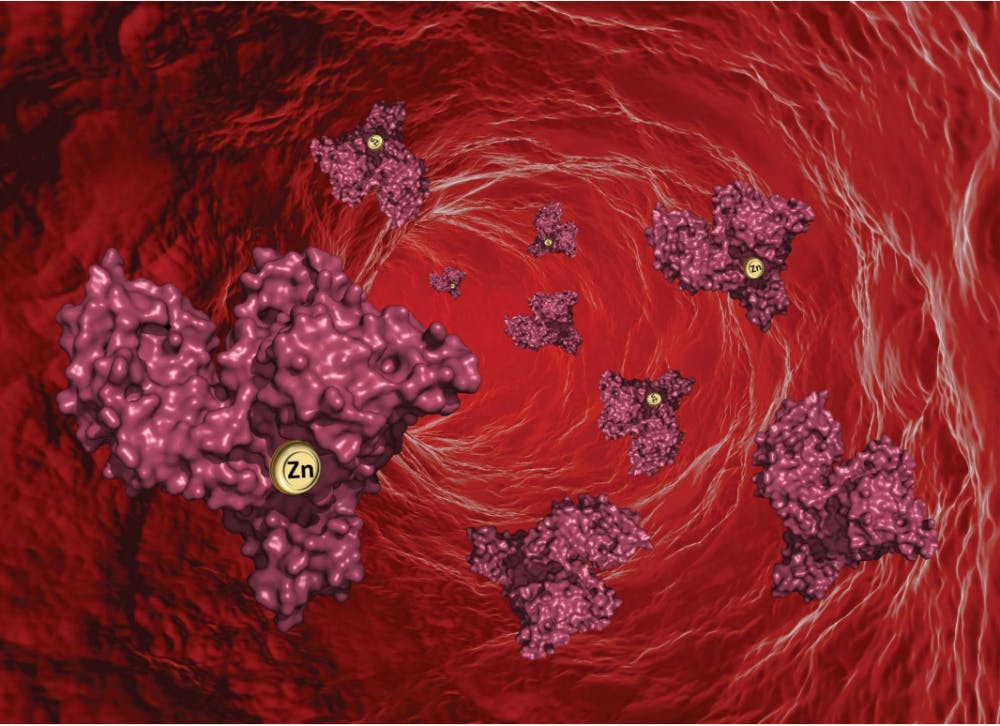Molecular Physiology and Biological Physics Prof. Wladek Minor recently led his lab discover how zinc is transported by mammalian albumin in the human body. Zinc is an important metal for catalyzing chemical reactions in the human body, which is necessary for most biological processes, including healing wounds and regulating the immune system.
Albumin is a protein that transports important biological molecules. The specific locations where biological molecules sit in albumin are called binding sites. Albumin had only one known binding site for zinc before Minor’s lab discovered the additional sites for interaction and transportation.
Minor‘s lab has worked on biological methodology and studied albumin extensively. Minor’s lab was the first to figure out the crystal structure of bovine serum albumin, a protein widely used to calibrate instruments in labs.
“There was a long discussion [about] where zinc sits in albumin,” Minor said.
Minor’s lab started to focus on the interaction between zinc and mammalian serum albumin after collaborating with scientists from St. Andrews University and the University of Warwick in the United Kingdom, who were already studying zinc.
Minor’s lab first predicted the binding sites by building a model of the interaction between zinc and albumin.
“One of the collaborators that Dr. Minor is mentioning … [was] using EXAFS (extended X-ray absorption fine structure), a [method of] molecular modeling, to model zinc interaction with albumin, ” Kasia Handing, a former graduate student in Minor’s lab and the main contributor to the zinc project, said.
Molecular modeling is an economical strategy that provides a rough idea of the binding sites’ location before crystallizing the zinc. Crystallization is a chemistry method that separates biochemical molecules from its surrounding environment. After modeling and crystallization, x-ray crystallography was used to determine the molecular structure by looking at the crystallization product.
According to Ivan Shabalin, a research scientist in Minor’s lab, the true coordination between zinc and albumin can better be seen through x-ray crystallography.
For Minor’s lab, x-ray crystallography was an indispensable technique in the discovery of this crucial interaction and is the most-used technique in the lab. It provided concrete proof for where zinc binds. However, Minor said scientists have difficulty crystallizing albumin.
According to Maksymilian Chruszcz, an associate professor at the University of South Carolina who worked in Minor’s lab between 2003 and 2012, it is tricky to bring the highly soluble albumin into its crystallization concentration.
Though they had plenty of experience crystallizing albumin, Minor’s lab also faced crystallization problems with human serum albumin and zinc complex. The problem had to be resolved by adjusting the acidity of the solution used for crystallization similar to that in the human body, according to Handing.
Rather than focusing on one single topic, Minor’s lab emphasizes the development of biological methodology and the ability to think as a scientist. According to Minor, a failed experiment tells researchers that something needs to be explored.
“People who work in my lab … are not necessary working for protein structures,” Minor said. “They are working in other things, because they are trained not to be crystallographer, but to be scientists.”







